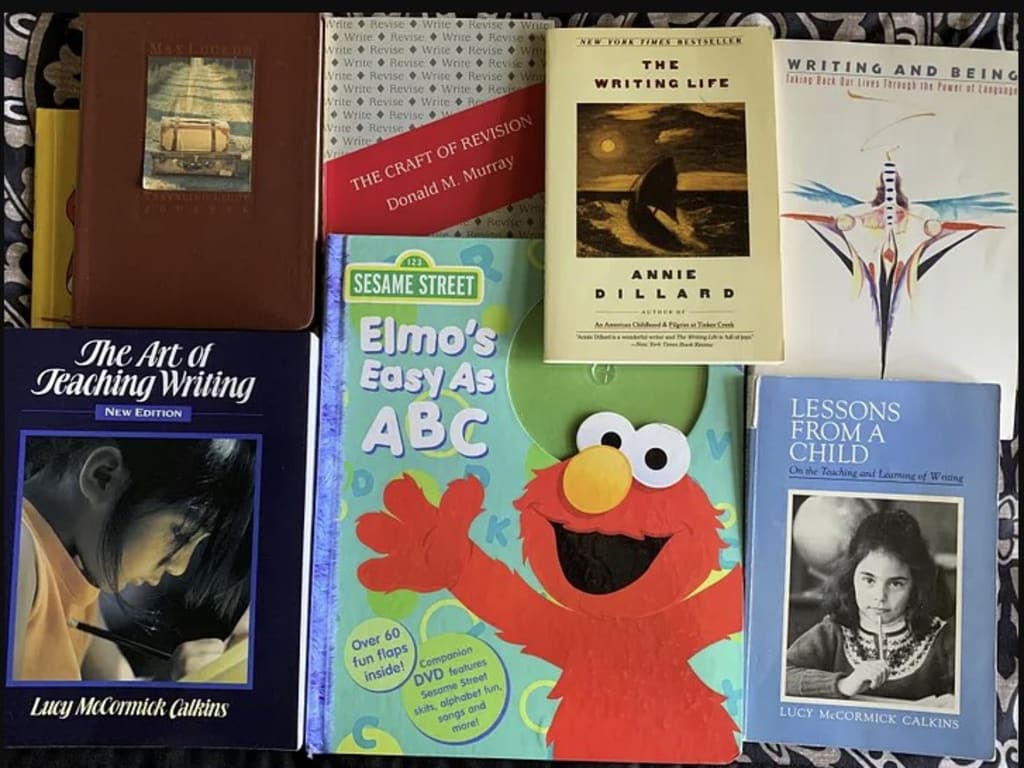Audience Awareness Should Guide Writing
Writing is a science and the first step is to identify the audience

We understand dialogue changes depending on the audience. A simple greeting can be formal, casual, personal, or non-verbal. Each of the following examples illustrates a teen boy meeting someone and shows how they might act and what they might say.
- When the teen met his girlfriend’s father for the first time, he shook the man’s hand firmly, looked him in the eye and said, “It is a pleasure to meet you, sir.”
- Sam high-fived his buddy when they passed in the hall, “Hey, guy!” Then he continued on without another word or a backwards glance.
- My spine tingled when he approached and placed his hand on my back and whispered, “Babe.” Only one word, and I knew he was interested.
- They acknowledged each other with a head nod and a smirk.
Social norms and roles dictate how people present themselves in public and private settings. Writing is no different. If an author’s desire to produce realistic, engaging text, it is important to understand the impact of their words.
Identify the readers.
Once a topic is chosen, the writer must begin to identify the readership. If the audience is generic, the writing will be generic lacking in voice, style and ultimately focus. Writing comes alive when it is directed to a specific group. For instance, a reader of this article, I would assume, is a writer or desires to be one. The range of possible readers in this category is immense.
Children may grow up to be great authors, but they must start by learning the alphabet. Elmo’s Easy as ABC is a book they would read to begin their writing life. Children’s books contain simple language, pictures, and animated characters.
Older writers may use writing as a means to understanding. Lynn Nelson begins Writing and Being by explaining to the reader that his text is not a book about writing; it is more.
“This is a book about people writing. It is about writing as a tool for intellectual, psychological, and spiritual growth. It is about our language and our being and their powerful interconnectedness, which have often been taken away from us without our even knowing what we have lost. This book is about taking back the miraculous gift of our language and using it as an instrument of creation.”
Nelson proceeds to provide lessons on writing that ultimately teach the reader to appreciate life and the power of language. The chapters read like personal letters encouraging writers to speak from their hearts as the author shares stories that inspire and teach.
Journals are an alternative type of book that encourages writers. Many authors have compiled quotes about writing, merged them with blank pages to produce inspiring journals to prompt writing. Authors of journals provide the motivation for others to add the words and write their own stories.
Inspiration is provided through Annie Dillard’s narratives in The Writing Life. Each chapter reads like poetry as she shares her life experiences while weaving in lessons about the power of words. Her audience consists of writers and non-writers who want to experience art through words.
Teachers of writing value Lucy Calkins’ books. However, different titles speak to vastly unique audiences. Lessons from a Child follows an elementary student’s exploration with language and provides lessons that support the growth of elementary children. Her second text, The Art of Teaching Writing, focuses on the craft of establishing a functioning writing workshop in the classroom. Both illustrate how teachers present lessons and how students produce writing under the tutelage of an expert, but the approach differs in presentation. The first reads like a story and the second more like a textbook.
Experienced writers, though they would find pleasure and power in any of the titles listed, would explore the words of professionals in their field who share wisdom about writing: Peter Elbow, Donald Murray, E.B. White, Toni Morrison, Maya Angelou, or Steven Spielberg — just a few of the many who share the mystery behind their talents.
What does the audience know about the subject and what does the audience need to know?
Activity for understanding
A valuable activity to reinforce the necessity of identifying audience would be to browse the magazine shelf at a bookstore. Find a category and explore the many types of publications available. Each journal attracts different personalities and fulfills a variety of interests. Examine the list below of magazines for car enthusiasts. Each addresses a similar topic but for a different audience.
- Popular Mechanics
- Classic Car
- Muscle Machines
- Hotrod
- Motorsports
- Cars Report Price Guide
- Collectible Automobile
As the wife of a car buff who worked for years in a dealership, taught automotive technology to high school students for 30 years, raced at the local drag strip, restored classic cars and is a regular at car shows, each of these journals can be found in our home. But each serves a different purpose and fits a different interest of my husband.
What is known about the reader?
Target readers prior to writing. By answering these simple questions, a writer can focus the material and then publish it to an audience for maximum engagement.
- Age?
- Sex?
- Interests?
- Ability level?
- Expectations?
- Background?
- How can writers target audiences?
Understand the needs of the reader
Before beginning to draft, an audience should be defined so that the voice, style, and content address their needs. Sometimes, the simplest revisions can improve a document. Think about that teacher who held immense knowledge on a subject but remained incapable of explaining the curricular in a manner manageable for students. Reflect back to the relative who spoke to you like a child — at your wedding. Have you ever heard someone tell a joke at a solemn event? These are all examples of a lack of audience awareness.
One article cannot speak to everyone. A writer must modify the content to a specific, defined audience. Just as a speaker changes their approach to the interest of the audience, adjustments must occur in writing. Each group brings different experiences, beliefs and expectations to the situation that require a unique approach.
When a writer neglects to address the readers’ needs and interest, the writing either deviates from the intended purpose or attempts to satisfy too many needs. Finding the appropriate audience for a piece is essential to success.
Question to ask when defining the audience
- What is the topic?
- What is the purpose? (i.e. entertain, inform, teach, persuade, etc.)
- How difficult is the reading?
- Is a prior understanding or specific vocabulary required?
- How long does it take to read?
- Are there any illustrations, graphs, or charts?
- What is unique about the style?
- What age would enjoy this piece of writing?
- What characteristics describe the reading audience?
- Why is this an appropriate audience?
Most of questions can be answered prior to writing. Even if in the beginning you think you have isolated the correct audience, prior to submitting to a publication, return to your paper, reread it, and determine if the final draft aligns with the personality of your audience. This may spark a need for revision. If you answer yes, submit. If you answer no, determine what you need to do differently and do it.
There are several criteria to determine the appropriate audience. Once identified, it becomes the writer’s responsibility to present material in a manner that is approachable and understandable for the reader.
Understand how readers dictates format
The readability should be assess and match the audience. The number of words, the vocabulary, and the content all influence the reading level of written material. Several readability checkers are available online that analyze text and provide feedback. Simply by pasting a sample of the writing into a program, feedback will be provided on the number of sentences, words, syllables, and accessibility.
Visuals captivate young children and inform adults. Sometimes they enhance enjoyment while other times they influence understanding.
Graphs and charts help organize ideas and present them in a manner that is easier to comprehend. Typically, they increase understanding of the relationship of data to the content and allow information to be more consumable.
Examples provide samples of material to increase understanding. For instance to demonstrate the value of revision, examples of the first draft and final can be included to demonstrate changes.
Voice and style depend upon the purpose, should be modified appropriately. If the goal is to promote humor, satire, sarcasm, or personal experiences might serve the purpose. When the author is teaching, an instructional style will fill the need. The power of persuasion is enhanced through the use figurative language with techniques such as similes, metaphors, or alliteration.
Format is dictated by the genre. Novels are consumed as a means of escape, to live vicariously. So, they are formatted in longer chapters. How-to-articles provide readers with shorter paragraphs that are easier to consume. Headings divide information into manageable segments and work with material that is technical.
As a writer, think about the characteristics of the material you read. What helps you concentrate? What makes you smile? When do you put the book down? What inspires you to continue reading? Examine what works and use that information to create text that hooks readers.
Identify your readers and write to them.
Pretend your audience sits in front of you as you address their interests, concerns, and emotions. By writing to a person, your words gain power and become personal.
About the Creator
Brenda Mahler
Travel
Writing Lessons
Memoirs
Poetry
Books AVAILABLE ON AMAZON.
* Lockers Speak: Voices from America's Youth
* Understanding the Power Not Yet shares Kari’s story following a stroke at 33.
* Live a Satisfying Life By Doing it Doggy Style explains how humans can life to the fullest.
Enjoyed the story? Support the Creator.
Subscribe for free to receive all their stories in your feed. You could also pledge your support or give them a one-off tip, letting them know you appreciate their work.






Comments
There are no comments for this story
Be the first to respond and start the conversation.